Entries tagged with “construction”.
Did you find what you wanted?
Tue 4 Mar 2014
Posted by admin under Asbestos, Asthma, Biological Monitoring, Chemical Exposure, Dermal, Hazard Communication, Hearing Conservation, hygienist, industrial hygienist, Management, Mold, occupational hygiene, Risk, safety, Training, Uncategorized
Comments Off on I’m sick …and I think it’s from my work
Let’s clarify: You are a working adult. You are feeling symptoms (of some sort). And, you think it’s from something your exposed to while at work (in construction). This could include, but will not, the flu-bug. Below is a list of the most common construction illnesses.
Most Common Construction Illnesses:
- Upper respiratory
- could be from silica, drywall, dust, asbestos, nuisance dust, chemicals (I won’t even try to list all of them)
- Skin (dermal, dermatitis) damage –
- From: concrete, abrasion, chemicals
- Eyes
- mostly from things that get into the eye.
- Cumulative trauma (ergonomics) or inflammation
- repetitive motion, over a day hurts, imagine this for years
- Burn (heat or chemicals)
- Usually around hot work like welding, but this can occur when using certian chemicals
- Hearing loss
- cumulative trama to the ears when exposure is above about 85 decibels for any extended period of time.
- Poisoning– General or systemic
- From: poison ivy, stinging needles, dog bites, bees, etc.
This list may vary depending on many things including what type of construction you are in; GC, heavy, civil, specialty, etc. Â I put this list together to get a picture of where we see illnesses. However, as previously mentioned, and, everyone knows, the FOCUS FOUR is really where most injuries occur in construction.
We have seen the most prevention of illness due to one single device:
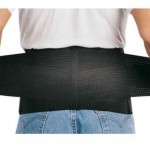 the back support. Â ha. just kidding, of course.
the back support. Â ha. just kidding, of course.
Wed 18 Sep 2013
Posted by admin under ACGIH, Exposure, Federal OSHA, Hearing Conservation, hearing protection, Management, NIOSH, Noise, OSHA, Personal Protective Equip (PPE), Safety Programs, TWA, Uncategorized
Comments Off on Hearing loss prevention, in construction
It’s sad to say, but many construction companies have not yet started a formal hearing conservation program. Their solution is to purchase the best earplugs, for the lowest cost, and give them away like candy.
As I’ve mentioned before: Sometimes OSHA’s rules are protective (meaning: you will be safe) and other times they are really not on par with the health research. Hearing loss and OSHA’s method of measuring noise are NOT protective to employee health (your hearing). For the best method of measuring noise, look to the recommended guidelines of the ACGIH. In order to get the exact parameters, you must purchase their Guide to Occupational Exposure Values (TLVs) booklet. It hasn’t changed (at least for noise) for a few years, but it is still the most up to date on health for your hearing. Here’s a summary of some differences:
- Exchange rate (how noise doubles and is averaged over time)
- OSHA uses 5, ACGIH uses 3 >>which means noise doubles every 5, or 3 dB increase
- this makes a BIG difference in your accumulated average noise level (TWA).
- Exposure Limit, or Criterion Level
- OSHA says 90 dBA, ACGIH says 85 dBA
- Doesn’t seem too different (-5), but remember noise is logarithmic and it’s measured different by OSHA & the ACGIH
NIOSH also has some guidelines, which are very similar to the ACGIH.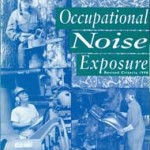
There are some strong benefits to having a hearing conservation program. Here are some examples and suggestions for bettering your own program.
If you have worked in construction for any period of time, you know how loud it can be, and how much exposure is out there. Don’t assume working in this industry that hearing loss will to happen to you. Do something about it. Here’s a presentation from CDC/NIOSH a few years back on how to start.
Fri 26 Apr 2013
If you’ve ever won an award before, sometimes getting the award rarely equates to anything lasting (other than your increased ego).  However, in construction nowadays, safety awards are HUGE! This is especially true if you are competitive bidding (or plan to in the future). I know companies who have received jobs & project  based upon one (or several) safety awards they have won. Of course they had other things going for them, but the safety award was the tipping point.
However, in construction nowadays, safety awards are HUGE! This is especially true if you are competitive bidding (or plan to in the future). I know companies who have received jobs & project  based upon one (or several) safety awards they have won. Of course they had other things going for them, but the safety award was the tipping point.
I am talking about company safety awards, not safety awards for being safe (see my earlier post, about safety incentives).
I really don’t think it matters where you get the award.
- Could be a OSHA SHARP, OSHA VPP, a regional/local conference (here’s an example, and here),
- an association award for safety (AGC, CURT, ABC),
- an insurance award (workers comp, your general liability carrier),
- safety program award,
- trade association (HVAC, Landscape, Union) or go for
- Safety non-profit (National Safety Council), ASSE, local section, or
- LEED and sustainability award (I know, not exactly safety-related).
Heck, create your own award! If you’re a GC, or a specialty contractor, why not give awards to your subcontractors or general contractors if they do an amazing safety work, or provide innovation? Print off your own certificates. Or, at the end of your project, ask your owner/GC if they will recommend and/or give you an award for the safe work you’ve performed.
Here’s an example of a construction website’s awards: Russell, James (no connections). Here’s a similar article from EHS Today.
Mon 5 Nov 2012
Posted by admin under Admin Controls, Bio Exposure Index, Biological Monitoring, Chemical Exposure, Engineering Controls, GHS, Hazard Communication, industrial hygienist, Personal Protective Equip (PPE), Respirators, Safety Programs, Training
Comments Off on Choosing hazardous products/ chemicals
When clients ask me to assist in choosing a product, I try to recommend a product with the least dangerous chemicals in it. I understand this isn’t always possible. However, I try to emphasize the worst case health scenarios and leave it up to the company to decide how to proceed. There are reasons to use a hazardous (to your health) product.
However, here are some considerations when choosing a hazardous product:
- more hazard vs less cost
- more hazard vs less time actually using product
- more hazard vs cost of PPE
- more hazard vs what the spec says
- more hazard vs different hazard
- more hazard vs terrible health effect/potential
- more hazard vs perception by others on the project (by the GC/public/subcontractors, media, neighbors)
Another issue with chemicals is the names and nomenclature. There are so many different names, common names, chemical names, and sub names of products – it gets confusing.
One solution called, ChemHat.org, offers a unique way of considering other chemicals. Plug in the CAS# (Chemical Abstract Number) or the name, and it gives you some ideas.
Another alternative in choosing the best product is to ask.
- Ask your industrial hygienist if this product is safe and/or are there concerns?
- Ask the GC if this is the only product that can be used
- Ask the architect if there are alternatives that are equally effective
- Ask the manufacturer if they have comparable products without the XXX hazard
Mon 29 Oct 2012
Posted by admin under Dust, Exposure, Lead, Powder Actuated Tool, Respirators
Comments Off on Powder Actuated Tools – a safety reminder
I’ve mentioned this before.
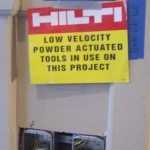
If you’re using these tools in construction please be careful.
Quick summary:
- the powder contains lead (Pb)
- you can be exposed to lead when it is airborne, AND if it gets on your hands & you eat it.
- lead is not healthy for kids
- Wash!
Thu 30 Aug 2012
As common as it sounds, falls in construction are still the #1 killer.
Go to www.osha.gov/stopfalls
This site has good information, reminders, training, and resources.
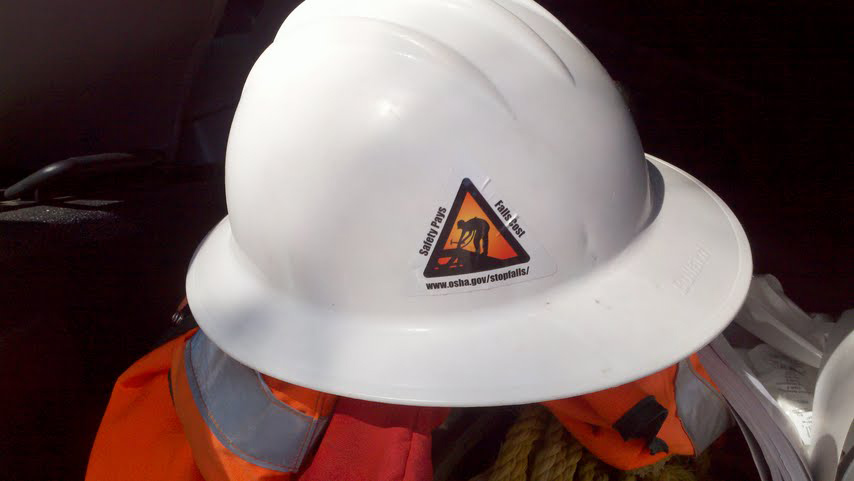
Tags: construction, fall protection, falls, height, industrial hygiene, lanyard, OSHA, roof, roofing, safety, tie off, yoyo
Thu 16 Aug 2012
Posted by admin under Air Monitoring, Cadmium, Concrete, Drywall, Dust, Exposure, Hexavalent chromium, industrial hygienist, Lead, Management, Mold, Silica, TWA, Welding
1 Comment
When performing air monitoring it can be useful to take multiple samples on the same individual throughout the day. Here are some reasons to change out the filters:
- build up of dust on filter – can cause overloading
- break-out the exposure data. Morning versus afternoon, or by job tasks, or the physical area the employee is working in, controls vs. no-controls, etc.
- if you question the employees motives. If you think the employee might skew the results, multiple samples might give you better control- or at least tell you if one is way-out-of-line.
Once you have your data results, how do you combine them?
If you’re taking particulate (dust, lead, cadmium, silica, etc) and you have the concentrations (from the lab) here is what to do.
- note the time (in minutes!) and the concentration results (mg/m3, ug/m3, etc) for each sample
- multiply the time and concentration for each – then add each number together
- finally, divide the above number by the total number of minutes sampled. This is your time weighted average (TWA).
Simple?! Yes. …And it’s really easy to make a mistake too. Check your math, and then eyeball the results and see if they make sense logically.
Here’s an example:
Andrew took three samples during one shift while Shelley was rivet busting through leaded paint. The first sample (118 minutes) was reported as 6.8 ug/m3 of lead, the second was for 245 minutes and had a concentration of 18 ug/m3. The last sample was taken for 88 minutes and was reported a level of 29 ug/m3. The overall results is 17.2 ug/m3 for the total time sampled. (Side: if you sampled for their entire exposure, and they worked longer hours, you could add those hours (assuming zero exposure) into the final time-in step three)
See the math below:

Mon 9 Jul 2012
Posted by admin under Asbestos, Lead, Management, Silica, Training
Comments Off on Construction Training Idea – add Silica
I was asked to perform asbestos training…and, “…maybe talk a little on lead”. However, I knew the employees needed to hear something totally different.
The firm requesting the training was a large excavation company that does a lot of road work. The training was at their bi monthly company wide meeting . I was given one hour.
So, my idea: Give them a quick overview of asbestos and lead, and then talk to them about silica. I called the training, “IH Health Topics in Construction”. And, as suspected, the questions that were posed all dealt with either: 1. “in my home I have…” or 2. silica and how to protect themselves.
I have made it my personal aim to talk about silica to as many employees as I can. I throw it into any training (even if I have just 5 minutes). Chances are, these guys WILL have overexposure to silica. Â The owner did not mind since I told him we were going to talk about a few different kinds of health issues in construction.
My suggestion: see if you can work Silica into your conversations and trainings.
Tags: construction, cristobalite, excavation, IH, quartz, safety, silica, silicosis, train, trained, training
Fri 15 Jun 2012
Posted by admin under Air Monitoring, Carcinogen
Comments Off on Diesel exhaust = Carcinogen!
It was recently declared that diesel exhaust is a carcinogen by the World Health Organization’s (WHO) International Agency for Research on Cancer (link to the press release). As you know, a carcinogen is a substance known to cause cancer. The most well known carcinogens are cigarette smoke, benzene, and asbestos.
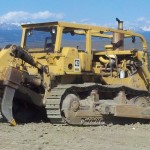
If you are in construction you probably know how many pieces of equipment use diesel…LOTS. In fact, heavy highway and large commercial construction use it almost exclusively. And, if you have ever traveled out of the US, you realize that diesel is used a lot more than gas. Don’t forget trains and commercial trucks.
So, if you think you have possible exposures to diesel exhaust on a regular basis…you should do something. Here are some ideas:
- tune-up (lower emissions, better efficiency)
- direct exhaust away from people/HVAC intake
- exhaust equipment outside
- increase dilution ventilation (usually not recommended for carcinogens)
- make sure the scrubber works
- measure exposures to employees (ask me in 20 years why this is a good idea)
- switch to biodiesel (I actually DO NOT know if this is a safe-alternative, but it does smell better)
Here is another article on it.
Fri 1 Jun 2012
I had posted a few weeks ago about a recent sighting of silica exposures during concrete/asphalt cutting. Then, today, at a stoplight…there it is.
A worker was using a gas powered hot saw (cut off saw) with an abrasive blade to cut a concrete pipe. No respirator.
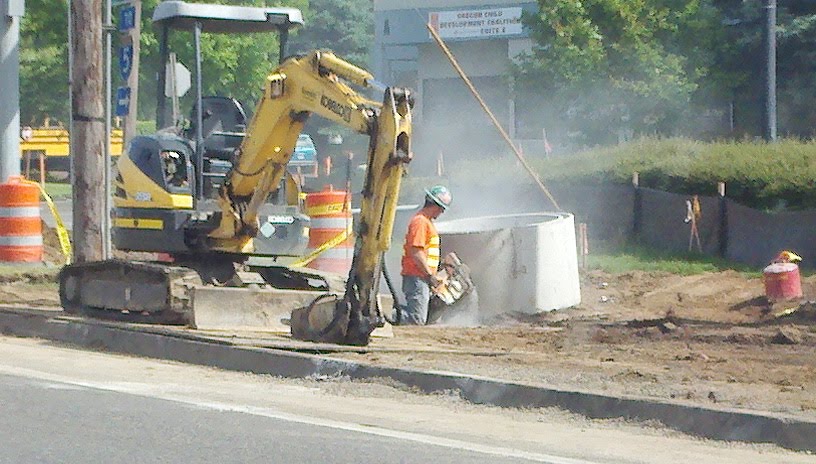
If you were me, what would you do? (Leave your answer in the comments section)
- call the company main office?
- stop and caution the employee?
- call OSHA?
- take a picture and post it for the world to see (check…ha)
- offer to buy a respirator
- perform air monitoring for them? (for free, of course.?)
 the back support. Â ha. just kidding, of course.
the back support. Â ha. just kidding, of course.





